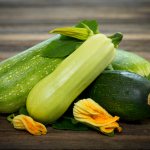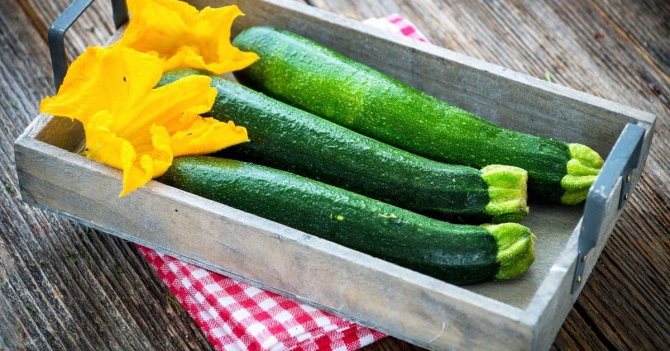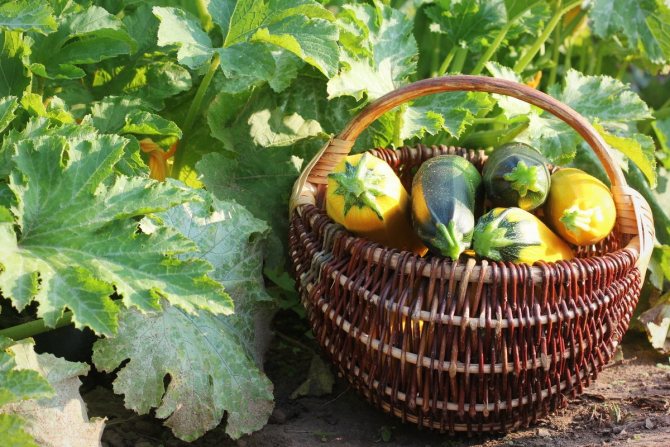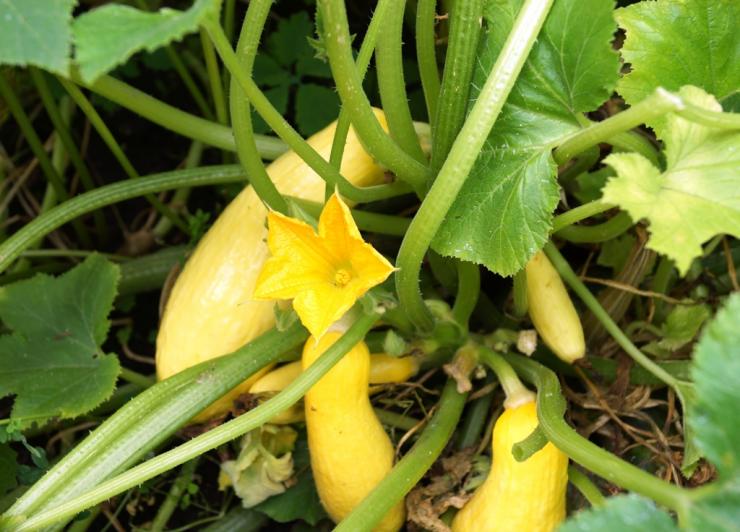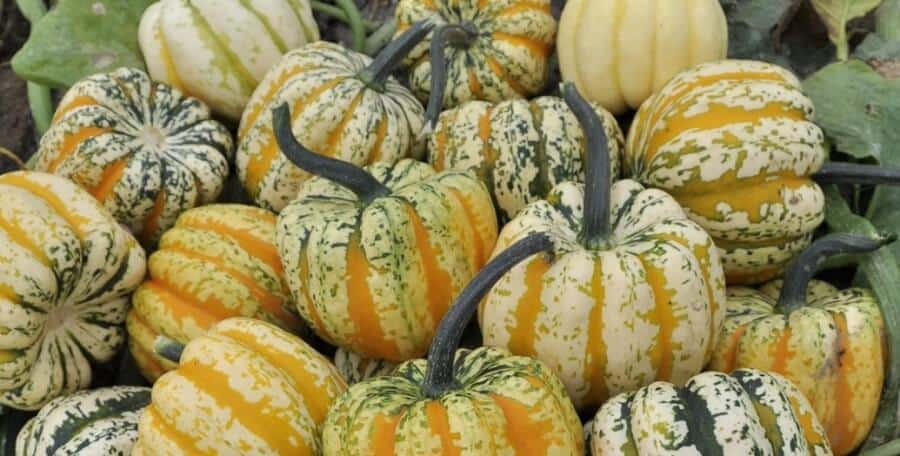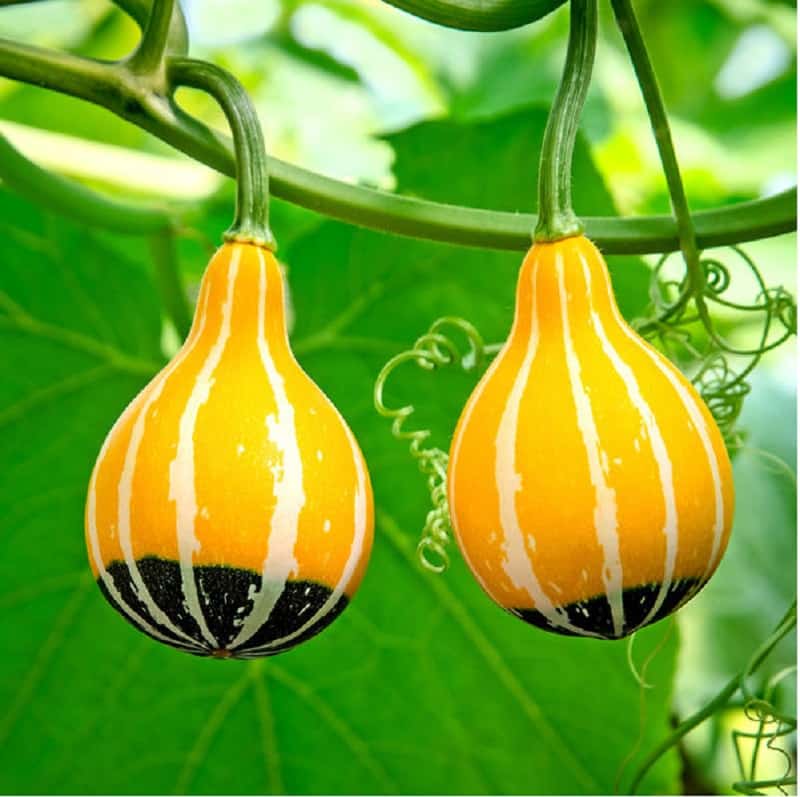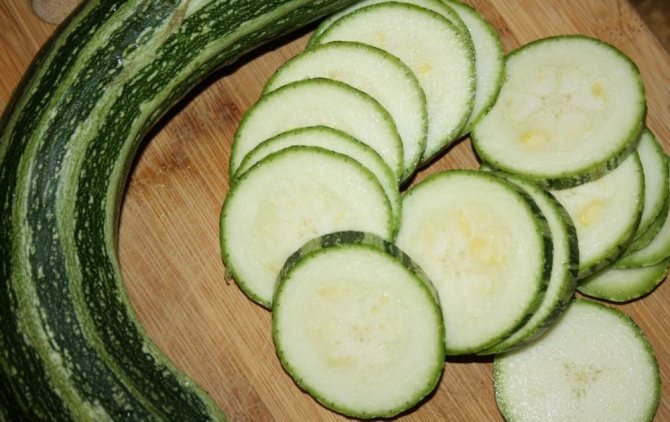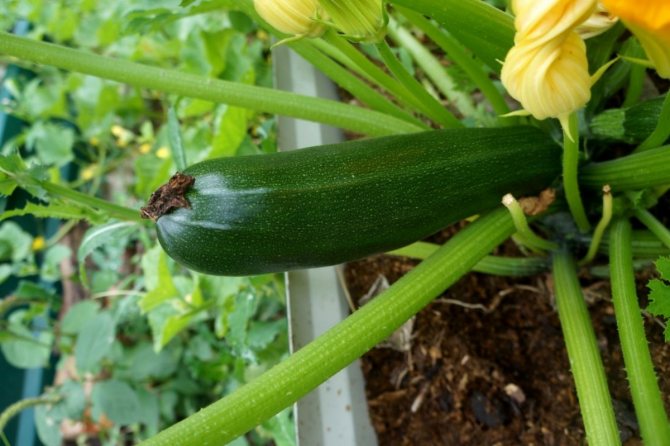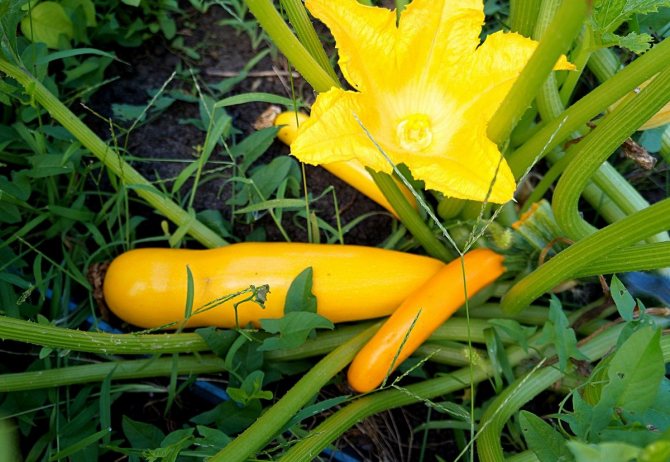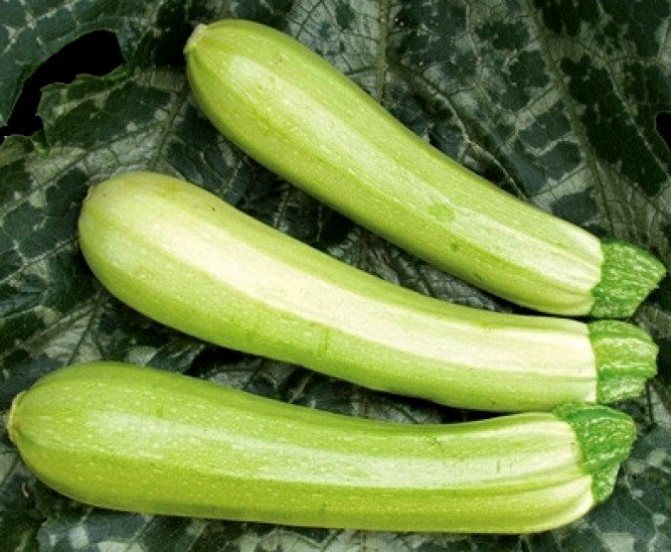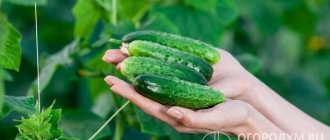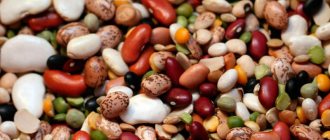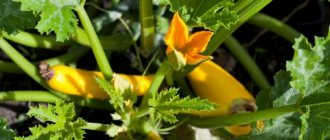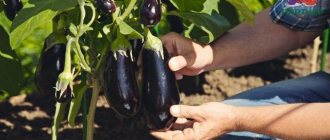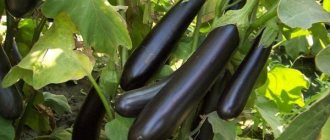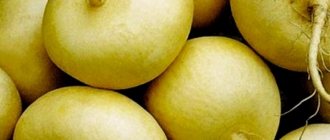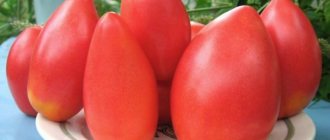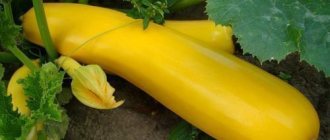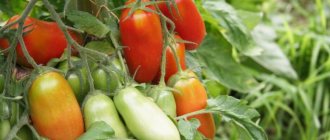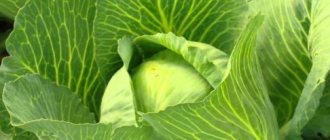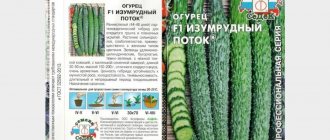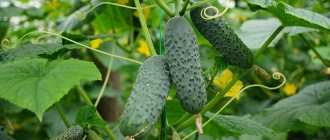Sergey Bondarenko I decided to plant zucchini in the country
Three days ago I was at the dacha with my wife. She expressed a desire to plant zucchini (lat. Cucurbita pepo). Before that, we had tomatoes, cucumbers, potatoes.
I do not mind, I began to look at the photos, study the species, different varieties of zucchini with a description, in order to understand which zucchini is better to plant. I share information.
Zucchini differ in different forms of fruits and, with the right approach, give a bountiful harvest
Selection of varieties
Whichever variety we choose, it will be healthy. Any zucchini is a minimum of calories (24 - 27 kcal per 100 g) and sugars (5%), but it contains valuable vitamins (carotenoids, ascorbic acid) and minerals (silicon - slows down aging, rubidium - is important for blood and blood vessels , vanadium - regulates hormones and stabilizes the psyche). The pulp contains 93% water.
Zucchini is considered an uncomplicated garden culture, but there are unexpectedly many selection criteria. The modern assortment is incredibly rich and many parameters are important.
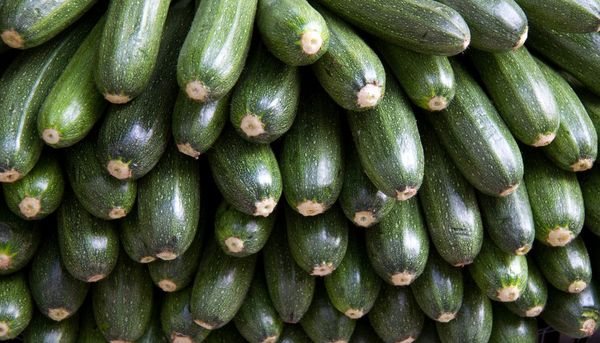
@Tony Hisgett
Plain or zucchini
Zucchini is a variety with a compact bush, extremely short stems, not too large graceful fruits, thin skin and juicy pulp without fibers. The seeds in unripe zucchini are almost not felt.
In the Russian State Register, zucchini and zucchini varieties are combined into one group and there are no sharp differences between them (especially in the newest assortment).
If you need massive fruits for long-term storage, then you need to look for them among ordinary zucchini (Gribovskie, Russian size), and not zucchini.
An interesting vegetable is kruknek ("crank"). He is the closest relative of the squash; It stands out for the slightly curved shape of the fruit and the warty surface of the skin. Popular crooknek varieties:
- Swan geese,
- Giraffe F1,
- Golden scallop,
- Scrooge.
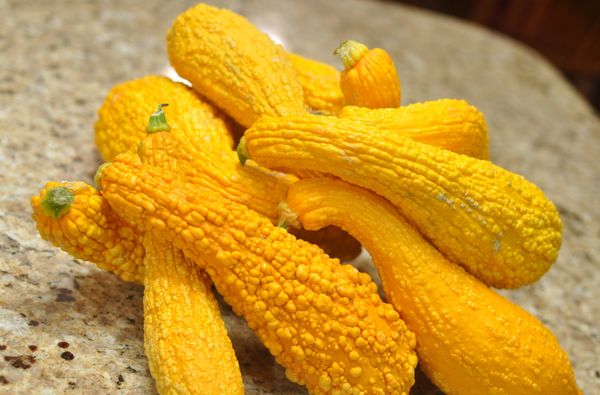

Golden scallop
Fruit
Zucchini differ:
- size;
- shape (cylindrical, oval, round);
- the thickness of the peel and its color (white, light green, yellow, orange, green, dark green, striped, spotted);
- the density of the pulp and its color (white, cream, greenish, yellowish, pinkish, orangey);
- taste (delicate or fibrous, fresh or sweetish, sometimes with special aromas);
- the hardness of the seeds (from rough to imperceptible).
Bush characteristic
In older varieties, the whips can reach a meter in length. Climbing zucchini sometimes branch intensively and grow widely, which complicates caring for them. At the same time, the return from the area is not too large.
Much more compact bush squash - with a short stem no more than half a meter long, often less than 30 cm. Branching is weak or moderate.
Many modern hybrids are characterized by an open type of bush - erect, convenient for care and collection of green leaves. They are suitable for thickened planting, and the yield per square meter increases several times.
Climate
The best varieties of zucchini for open ground are resistant to cold snaps and temperature extremes. In regions with a short summer, hybrids with a quick and friendly return in very early periods will please. In the southern regions, a long growing season and drought resistance are appreciated.
Self-pollinated hybrids successfully bear fruit indoors. There are compact zucchini for growing on the balcony:
- Patio Star F1,
- Golden F1 (with a bush diameter within half a meter).
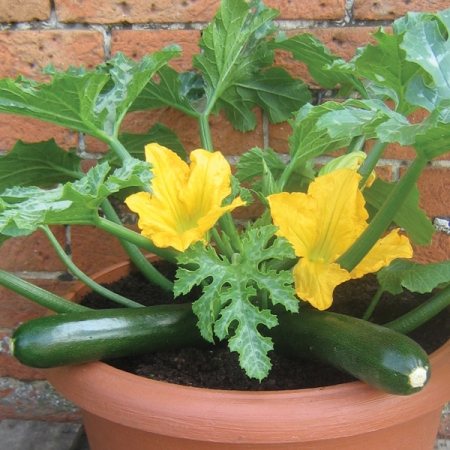

Patio Star F1
Disease resistance
The resistance of zucchini to viruses (mosaics, spotting), bacterial and fungal diseases is appreciated: rot of fruits and roots, bacteriosis, powdery mildew, peronosporosis, anthracnose, ascochitosis, fusarium. This directly affects the quantity and quality of vegetables.
The newest hybrids have complex resistance to pathogens.
Yield
The indicator largely depends on agricultural technology, but the potential of modern hybrids is much higher than that of old varieties (with an excess of 3 - 5 times).
Variety or hybrid
Intensive yield and high quality of greens are guaranteed by the latest hybrid zucchini - with a decent level of agricultural technology. They can issue 3 - 6 zelents at the same time. Genuine hybrid seed is expensive.
Simple varieties are still valued for their unpretentiousness, traditional taste and the ability to collect their own seeds (avoiding inter-varietal cross-pollination and crossing with squash, pumpkins).
Purpose of products
Zucchini is a unique vegetable in its variety of culinary uses. Varieties with a neutral (fresh) taste go well with other foods and a variety of seasonings. Less common are sweet and sugary fruits like fruits or pumpkins.
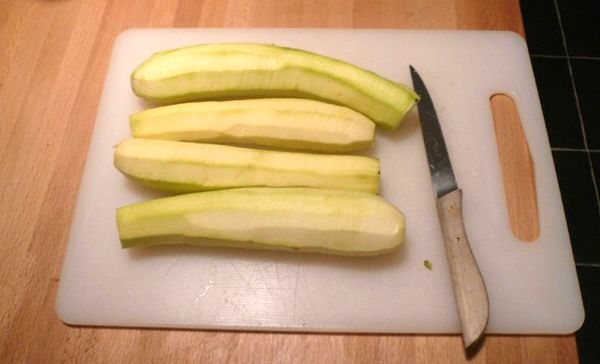

@Gabriel Jaquemet
The use of zucchini in cooking:
- Fresh salads, fresh juice (freshly squeezed juice).
- For baking (in dough and filling).
- Pickling, preservation of compotes and juices, preserves.
- Stewed and fried vegetables, casseroles, barbecue, caviar, salad preparations. For caviar, any zucchini is suitable, except for the sweetest. In other cases, preference is given to young ovaries.
Let's dwell on some areas in more detail:
Whole fruit baking, stuffing. Convenient special mini-forms - round, portioned:
- Orange F,
- Appetizing pot,
- Boatswain F1,
- Casserole,
- Gingerbread man F1,
- Ball,
- Cook,
- Rondini,
- Mother-in-law hospitable F1.
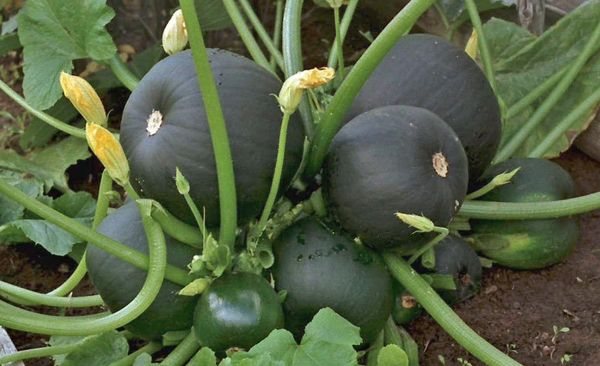

Boatswain F1
Drying, freezing
It is not easy to dry zucchini - they are very watery; starchy pulp with a high dry matter content dries better. For freezing:
- Peppy,
- Russian delicacy,
- Snezhnogorsk F1.
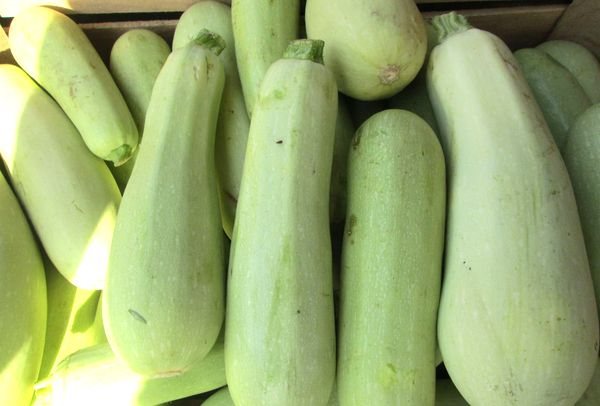

Snezhnogorsk F1
Long-term storage of fruits
In winter and even in spring, it will be possible to enjoy fresh vegetables, if, when planting, we take into account which varieties of zucchini are better stored. Usually this quality is noted in the description.
For market sales
The earliest production is profitable, therefore we select ultra-early ripening hybrids with amicable feedback. It is desirable that they combine tenderness with transportability (modern breeding works in this direction as well).
Experienced vegetable growers note that zucchini with a light green skin color is in the greatest demand.
For livestock and poultry feed
Large, productive vegetables with a high dry matter content and good storage are suitable for year-round feeding to pets of a subsidiary farm:
- Gribovskie 37,
- Winter Russian size.
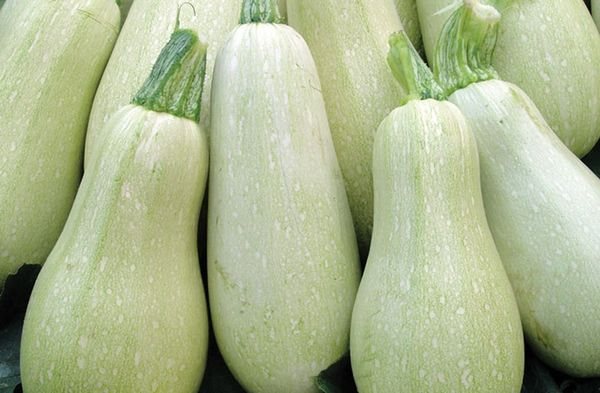

Gribovskie 37
It's great that zucchini can also be used for decorative purposes. Plants bloom nicely (corollas are large, bright yellow), and their leaves are wide, often motley and beautifully cut. Luxurious, lush specimens look advantageous in the foreground of mixborders and in flower beds (for example, in combination with ornamental cabbage and colorful salads).
Bushes planted in barrels, tire pyramids, large flowerpots (with regular watering and top dressing) are especially effective.
The fruits of some varieties are so bright that they serve as a real decoration of the garden (yellow-fruited, striped, spotted, crookneks, Orange F1, Delicate marshmallow F1).Ripe zucchini of unusual shape and color are an original winter decoration of the home interior (along with pumpkins).
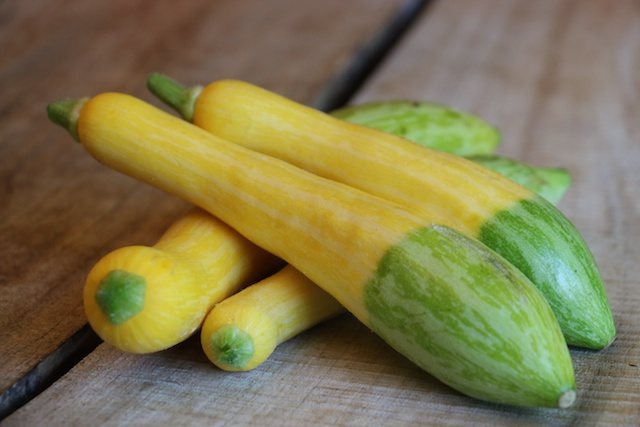

Delicate marshmallow F1
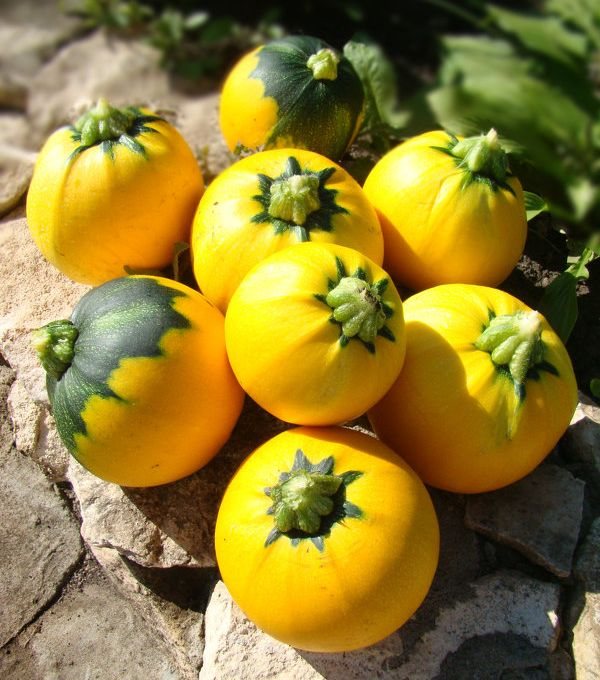

Orange F1
Ripening rate and care
Early zucchini varieties begin to ripen in mid-July. Shrub varieties of squash and climbing varieties need a lot of sunlight. Therefore, it is advisable to plant seedlings in open sunny areas, and not in the shade.
Thanks to the powerful root system, the plants need a little water. Watering may be infrequent, even if the weather is dry. However, the lack of moisture negatively affects the growth and development of the fruit. One plentiful watering in 10 days will be enough.
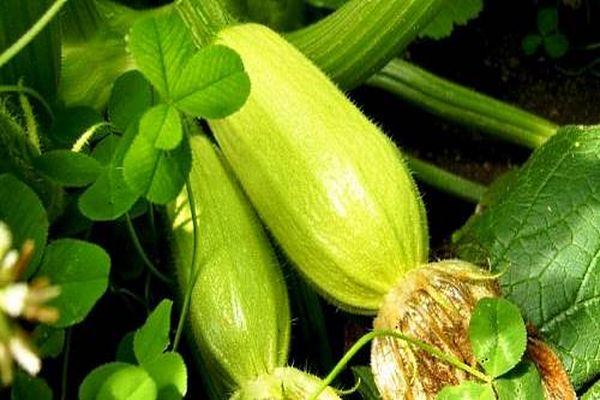

For open ground, the most productive varieties are planted in the soil zucchini... But it will be possible to achieve high yields only with constant care of the beds. The soil at the beginning of the season at the zucchini is loosened every week. During this period, it is important to make top dressing. The best option as a fertilizer is a mullein solution. Mullein is introduced twice - during flowering and fruiting. At this time, the plants most need fertilizers.
To improve pollination of inflorescences by bees, zucchini are watered with honey diluted with water. In 1 glass of water, 30 g of honey are diluted and the inflorescences are sprayed early in the morning. This simple method will double the number of pollinated inflorescences.
Iskander
They begin to grow zucchini when it gets warm outside. The yield is stable throughout the entire fruiting season. The length of vegetables is 17 cm, the crop must be harvested when the length of the zucchini is exactly that. Overgrown fruits are not suitable for human consumption.
See also
Description of the varieties of squash UFO, Gosha, Disk, Solnyshko, Sunny Bunny and their yieldRead
Cavili F1
During cultivation, lower leaves and weak shoots should be removed. For the rapid growth of plants, mineral fertilizers are applied to the beds. Pulp without bitterness. The skin does not get thick. No insects are required for pollination. The bushes are grown in open and closed ground.
Kuand
After sowing, seedlings appear in 45-50 days. The color of the fruit is camouflage. Bushes need regular fertilization of the soil. Differs in high immunity to diseases. They tolerate drought, rainy summers and cold weather normally. Overgrown zucchini have a thick skin and an unpleasant taste.
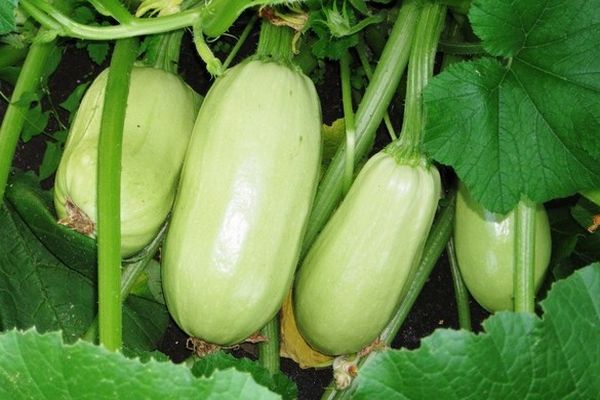

The best varieties of zucchini
The most desirable zucchini are those that combine early maturity with long-term yield, attractiveness with high palatability, disease resistance with successful climatic adaptation.
Early (early ripening) varieties
The first crop of zelents can be removed already a month after germination - before cucumbers!
Aral F1
Yielding (up to 10 kg / sq. M) zucchini with high resistance to viral diseases. Fruits are light green with a slight white speck. The marketable weight of the greenery is 400 - 900 g. The pulp is very tender, not friable. Japanese selection.
Iskander F1
Popular Dutch zucchini with excellent adaptation to any climate. High cold resistance and long-term performance. Club-shaped lime greens are removed when the mass reaches 300 - 800 g. The pulp is dense, not coarse.
Ripe zucchini are well kept.
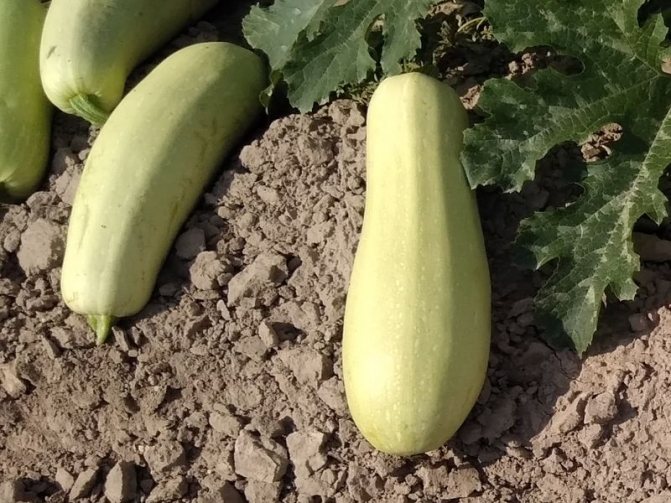

Aral F1
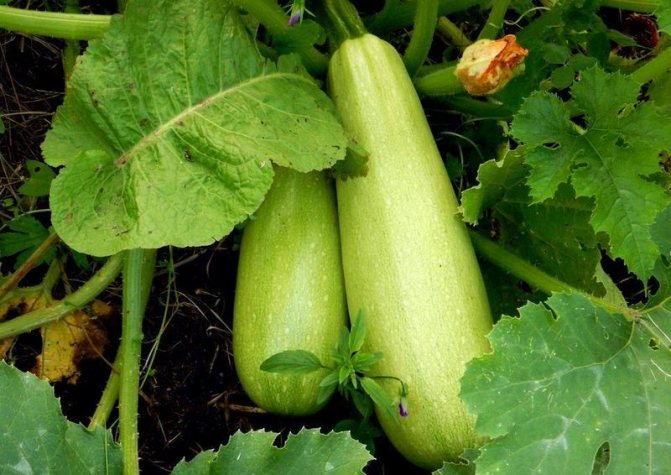

Iskander F1
Concordia F1
The newest zucchini from Japan with an open bush type and a stable ovary. It successfully resists many diseases and stress. Fruits are perfectly even cylinders: light green, transportable, lying even at the stage of zelents.
Roller
Non-hybrid zucchini (not zucchini) of Russian selection, in the State Register since 1990. You can get your seeds. Withstands cold and gray mold. Shrub, no higher than 30 cm. Simultaneously builds up 3 - 5 ovaries.
The fruits are oval, white, with a strong skin, about 1 kg in size. The pulp is loose, juicy.
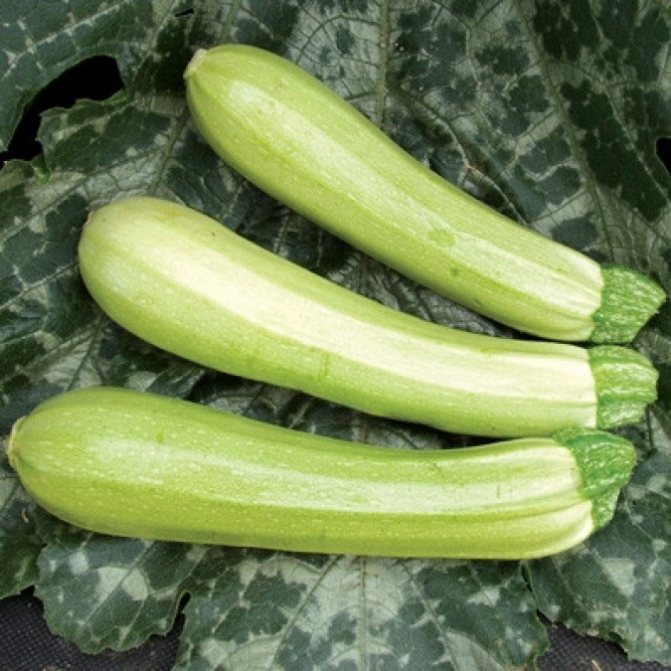

Concordia F1
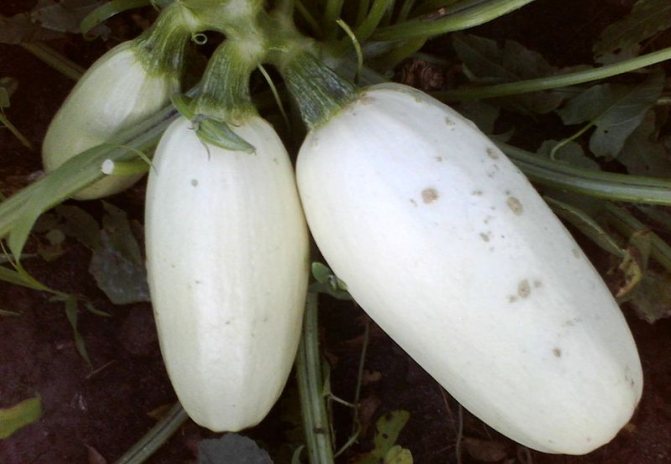

Nolik
The most productive
We choose one of the options: massive fruits for storage or frequent seasonal gatherings of Zelentsy. With frequent harvests from the bush, more than 2 dozen zucchini are obtained per season, 10 - 15 kg per square meter.
Winter Russian size
Since from a scientific point of view, zucchini is a type of hard-bore pumpkin, it is pumpkin properties that predominate in the Winter variety. The lashes are quite long, 1 ovary should be left on each. Fruits fully ripen 3.5 months after germination. Zucchini grow up to half a meter long and up to 20 cm in diameter, weighing 6 - 10 kg (record 30 kg).
Stored at home until next summer. The pulp is fiber-free, pinkish-yellow, sweetish.
Belogor F1
Russian bush squash (not zucchini) with elongated oval greenish-white fruits. Marketable weight - up to 1 kg. The skin is thin but strong; transportability is high. The pulp is not too juicy. Not afraid of temperature extremes, has a complex resistance to diseases.
From 1 sq. m receive up to 14 kg of vegetables.


Winter Russian size


Belogor F1
Tornado F1
A novelty of domestic breeding is a hybrid zucchini with a yield of over 15 kg / sq. m. Early, with extended fruiting. The fruit is a dark green cylinder about a kilogram in size. Delicate pulp is balanced in juiciness and density.
Ardendo 174 F1
An early Dutch zucchini with a long lasting impact. Withstands disease and any stress (including heat and cold snaps). The bush is powerful but compact. High-quality fruits - standard, smooth, light green, weighing 500 g.
The taste is excellent. Record harvest - over 16 kg / sq. m.
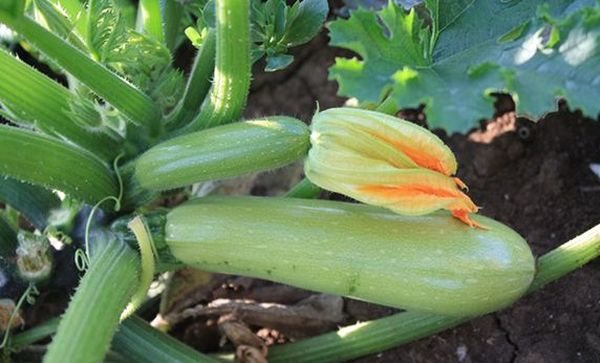

Pleadis F1
The newest early ripening hybrid with the longest fruiting period. Japanese selection. Plants are erect, strong, successfully resist infections and stress.
Light green zucchini, up to 15 cm long and 5 cm in diameter, transportable; continue to tie and grow back even with a cold snap.
Yasmin F1
Yellow-fruited Japanese hybrid. Harvesting of zucchini begins early and continues throughout the season due to the high disease resistance of the plants. Productivity 5 - 11 kg / sq. m. Fruits are long, small in diameter, weighing 0.5 kg. Creamy pulp, excellent taste.
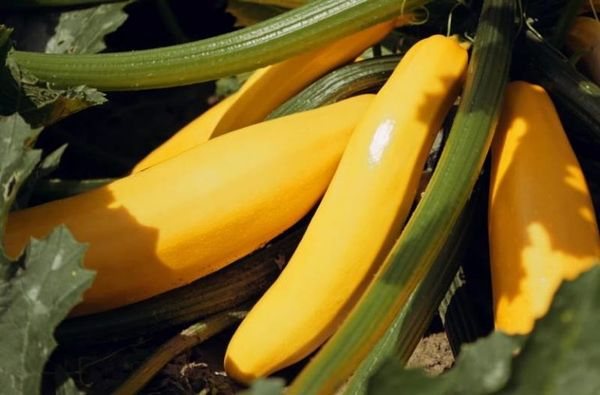

Self-pollinated
Zucchini is a plant whose fruits are tied by cross-pollination by insects (bees, bumblebees, wasps). Many modern varieties (especially zucchini) produce predominantly female flowers, which increases the number of ovaries.
Breeders also managed to obtain parthenocarpic (self-pollinated) zucchini - for indoor (greenhouses, hotbeds) and temporary shelters.
Galaxy F1
Early ripening (35 days), cold-resistant, unpretentious to soils. Zelentsy are light with white pulp. Marketable weight 300 - 600 g. Yields 7 - 10 kg / sq. m. The seeds are supplied by the Russian company Greenomica.
Lena F1
Ultra-early (from 25 - 30 days), fruitful, disease-resistant, hardy to heat and cold. The peel is light green. Weight 1 - 2 kg, tender pulp. The author of the hybrid is the French-Japanese company Vilmorin.
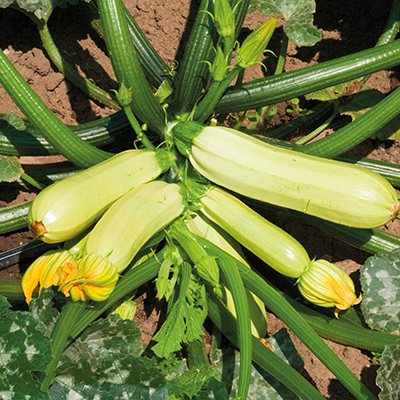

Galaxy F1
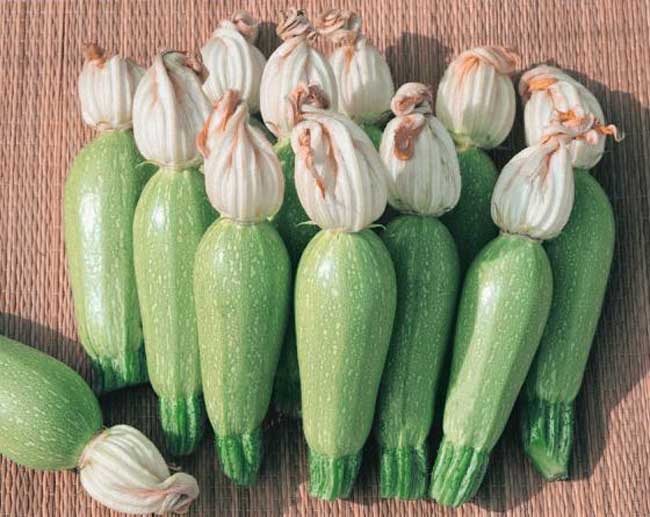

Lena F1
Maestro F1
Russian selection. From germination to the beginning of collection 40 days. Zucchini light green with white dots, 300 - 500 g. Ovaries grow together, up to 5 pieces at a time. Resistant to lack of heat and moisture. Harvest up to 10 kg / sq. m.
Hobby F1
Production of "Semko". Early, compact, disease resistant. Zucchini are graceful, light green, up to 600 g, juicy. Return 7 - 9 kg / sq. m.
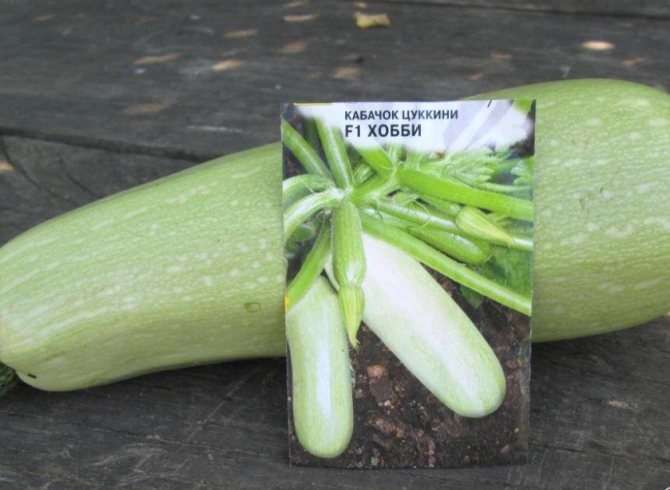

Hobby F1
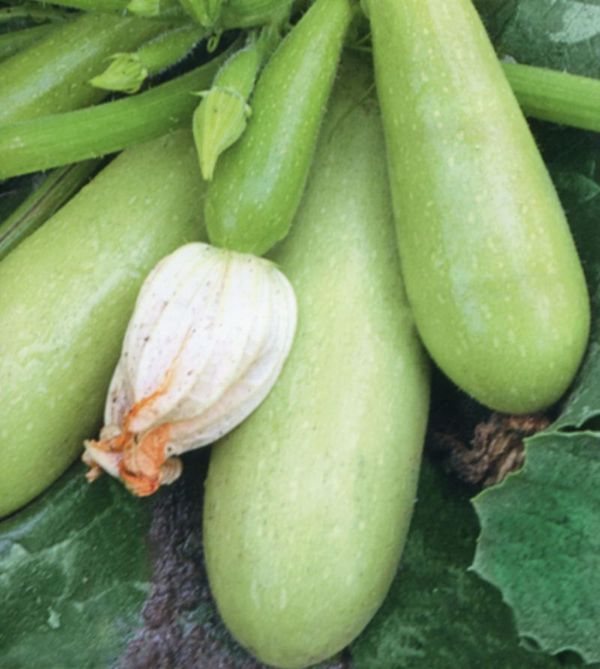

Maestro F1
Range
Below are lists of the best zucchini varieties for various characteristics.
Domestic
Achievements of Russian breeding are represented by non-hybrid and hybrid forms of zucchini and zucchini. They are zoned in different regions and grow well in the open field.
- Aeronaut
- Barchuk F1
- Cheetah
- Zebra
- Zolotinka
- Golden Taurus
- Maestro F1
- Striped sun F1
- Priobsky F1
- Russian spaghetti
- Tornado F1
- Tsukesha
- Black handsome
- Miracle orange F1
- Anchor
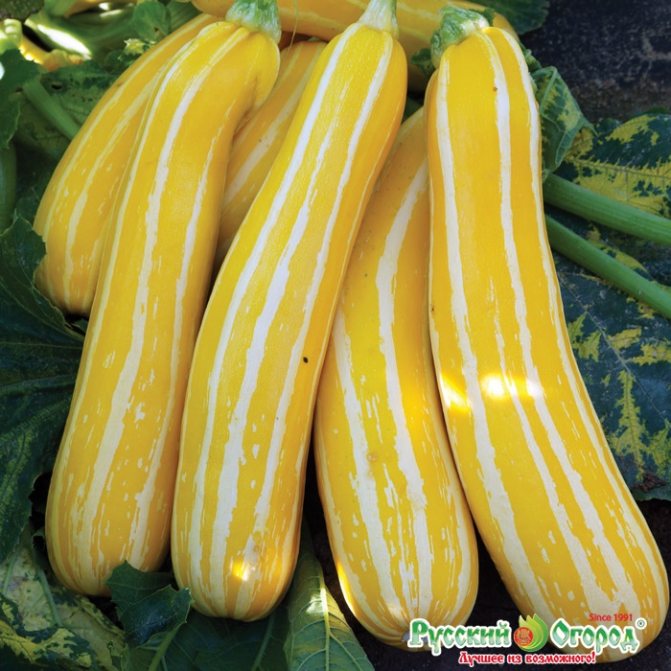

Striped sun F1
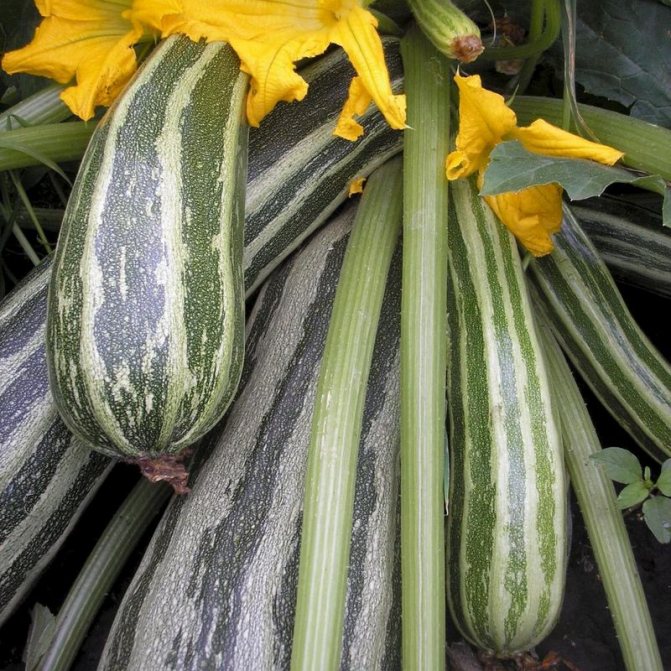

Rib
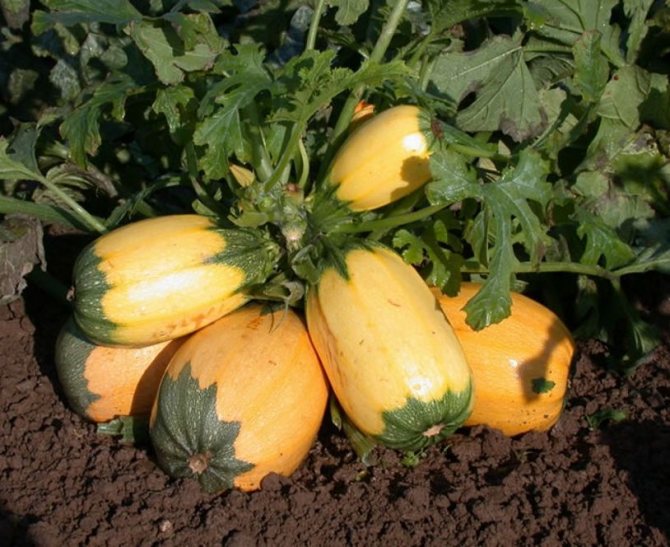

Russian spaghetti
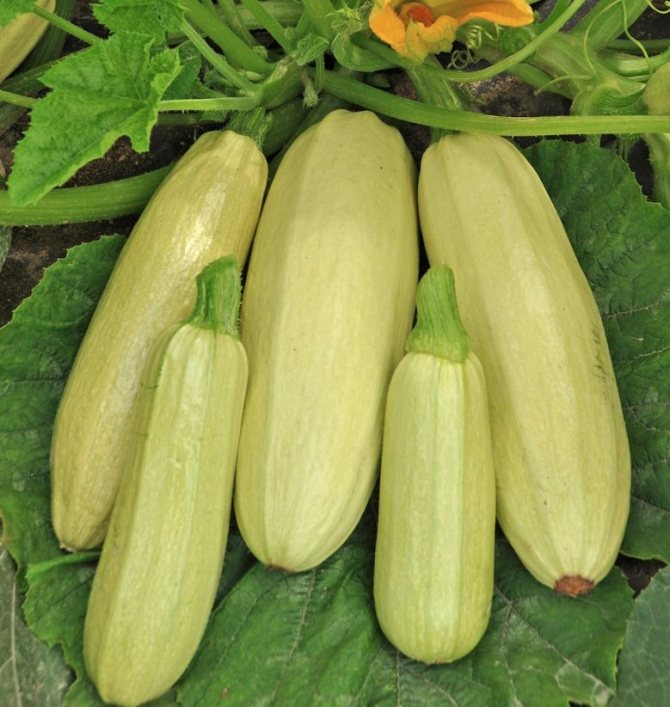

Anchor
Dutch selection
Holland (along with Japan, France and Germany) regularly updates the range of hybrids for commercial production. There is a comprehensive selection for early maturity, tenderness of the pulp and imperceptibility of seeds, parthenocarp, yield, disease resistance, transportability.
The best achievements of the world selection to taste and Russian gardeners. According to our vegetable growers, Dutch zucchini successfully adapt to different climates, but they are very demanding on nutrition and moisture.
- Amjad F1
- Diamond F1
- Iskander F1
- Salvador F1
- Suha F1
- Scilli F1
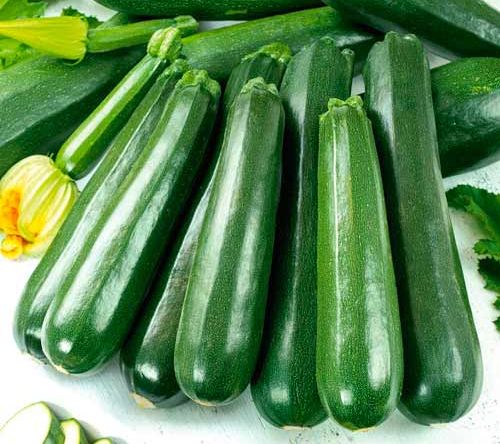

Diamond F1
For storage
A large amount of dry matter, full ripening, the ability to be covered with a strong skin - this is what characterizes zucchini for storage.
- Gribovskie 37
- Winter F1 gourmet
- Winter Russian size
- Pestrushka
- Spaghetti
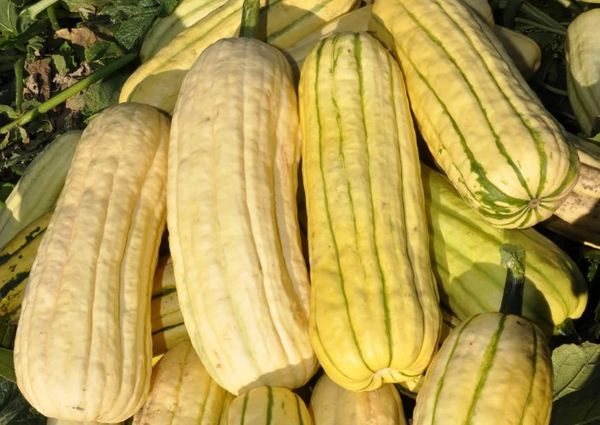

Winter F1 gourmet
Ripe fruits from self-pollinated hybrids also lie for a long time, since the seeds in them are underdeveloped and do not germinate inside.
For canning
For salting and sour marinades, there are varieties with a delicate but dense pulp (without fibers) and a neutral taste.
- Gingerbread man F1
- Gherkin
- King of the F1 market
- Sangrum F1
Sweet marinades and compotes are made from sweet and sugary fruits of gourmet zucchini.
- Pineapple
- Orange F1
- Winter gourmet F1
- Delicate marshmallow F1
- Walnut
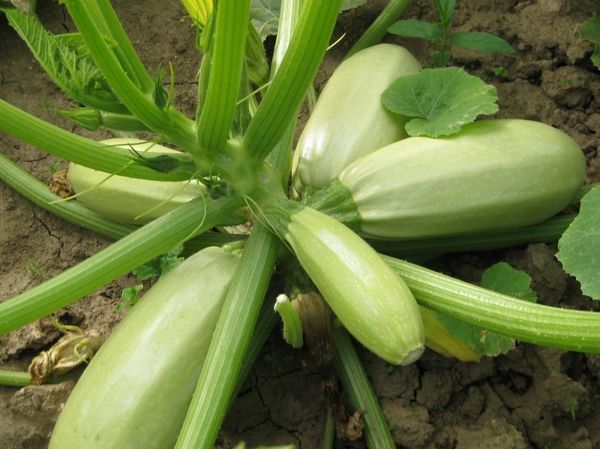

Gherkin
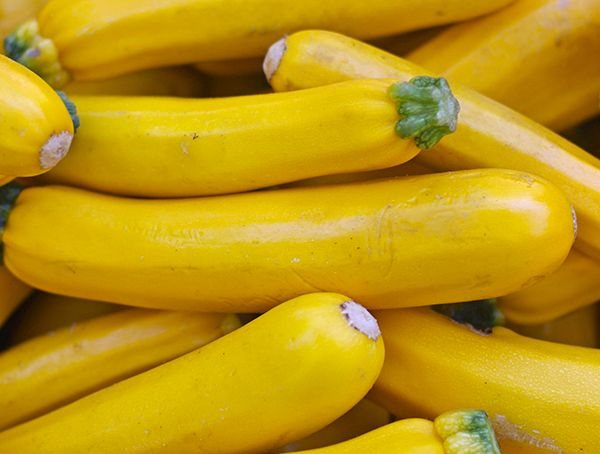

Pineapple
Options for the Moscow region
For planting in the suburbs, you can use zucchini, white zucchini, hybrids.
They all have their pros and cons that must be considered when buying seeds.
Zucchini can be stored in a cool place for about a month. Compared to other varieties, they bear slightly less fruit.
The main feature of varietal zucchini is that they cannot be kept fresh for a long time, but are great for conservation and freezing. Seeds for sowing can be harvested from the ripe fruit the next year.
Hybrid varieties can produce large yields. But the peculiarity of this type of zucchini is that seeds are not harvested from them for further reproduction.
The best varieties for planting in the Moscow region are:
- White Bush;
- Iskander;
- Genovese;
- Gold;
- Kavili;
- Tsukesha and others.
By region
In the southern regions, zucchini, which are drought and heat tolerant, with a long yield are welcomed. The further north you go, the more prized early maturity and cold resistance.
South
- Aymaran F1
- Aliya F1
- Ardendo F1
- Asma F1
- Pinocchio
- Firebird
- Medusa F1
- Mostra F1
- Excellent F1
- Sangrum F1
- Scilli F1
- Tosha F1
- Hobby F1
- Yasmin F1
Moscow region and the middle lane
- Ardendo F1
- Barchuk F1
- Velizh F1
- Vilina F1
- Delicacy
- Golden Taurus
- Emerald
- Iskander F1
- Kveta MC
- Concordia F1
- Lena F1
- Matroskin
- Neira F1
- Skvorushka
- Pheasant
- Tsukesha
- Black handsome
- Ural and Siberia
- Amjad F1
- Ardendo F1
- Arctic
- Indian happiness
- Bananas in the garden F1
- Important lord
- Vilina F1
- Diamond F1
- Iskander F1
- Concordia F1
- Lena F1
- Lemonade Joe
- Neira F1
- Pestrushka
- Northern option
- Northern bear
- Siberian emerald F1
- Siberian gold

